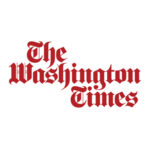|
Getting your Trinity Audio player ready...
|
Increasing Probability for Large-Scale Collision Between Israel & Iranian Proxies in Syria | 2019
INFORMATION:
Another significant direct Israeli-Iranian military collision took place in Syria on January 20th and 21st, 2019.
On January 20th the Israeli Air Force carried out an attack in the area of Damascus.
Later that day, an Iranian made mid-range surface-to-surface missile targeting northern Israel was launched from within Syria. The missile was apparently launched directly by the Iranian Revolutionary Guards and not by any of Iran’s Shi’ite proxies operating in Syria. The Iranian Revolutionary Guards (IRG) force is the Mullah regime’s elite military wing, which operates parallel to the Iranian Armed Forces. The missile was intercepted over the Golan Heights by the Israeli Iron Dome interceptor system.
In the early morning hours of January 21st Israel launched a wide attack on Syrian, Iranian and Hezbollah military targets southwest of the City of Damascus in the District of Damascus. Reportedly, targets included the international airport in Damascus, as well the military airport of Thalah in the District of Sweida, in southwestern Syria.
The Israeli attack reportedly caused substantial damage. According to one source evaluated as reliable, at least twenty-one people were killed in the Israeli attack – including five Syrian soldiers, twelve IRG personnel, and another three described as “non-Syrians” – likely militants of Iranian backed non-Syrian Shi’ite militias.
ANALYSIS:
Iran has been massively involved in the war in Syria since 2011.
Over the past eight years, Iran has sent into Syria dozens of thousands of Shi’ite militias – from Afghanistan, Iraq, Pakistan, etc. as well as Lebanese Hezbollah militants – all of whom are supported armed and guided by the Iranian IRG.
Parallel to its goal of saving Assad, Iran has been constantly striving to establish a military infrastructure in Syria. Building intelligence bases, air bases, missile and rockets storage facilities throughout Syria are the cornerstone of Iran’s strategy to establish a permanent land corridor stretching from Iran through Iraq through Syria through Lebanon to the Mediterranean Sea.
Iran – via its most important and powerful proxy, Hezbollah, for all intents and purposes controls Lebanon. For Iran, building a military infrastructure in Syria and securing the land bridge through Syria would firmly establish the Mullah regime’s control of Syria as well. Teheran will use the corridor to freely stream militants and weapons and will use Syria as a stage for its proxies to attack Israel when the time comes. (For more on the Iranian Corridor, please read my article “Iran can’t fulfill its Hope of a Shia Corridor without Iraq“, October 2018).
The Iranian plan to entrench itself in Syria and to secure a land bridge from Iran to the Mediterranean Sea presents a very severe threat to the State of Israel. Therefore, Israel has made it very clear, time and again, that it is determined to prevent Iran from completing its land corridor at all costs. To that end, over the past few years, Israel has been associated with hundreds of attacks on Iranian, Hezbollah and Syrian military assets in Syria.
For a long period of time Israel maintained a policy of muteness on that matter. That silence served both Israel and Iran-Assad alliance. For Israel, it provided a sort of immunity from a potential retaliation. For Iran and Assad, the vagueness provided a space of denial which enabled them to avoid the need to retaliate – a move that would very likely result in counterproductive outcomes for them. Indeed, as a fact – for the most part, Iran and Assad did not retaliate when Israel continued to attack their assets in Syria.
The muteness and vagueness therefore served as a mechanism to prevent a circle of actions and retaliations which might spin out of control and result in a wide military confrontation that none of the sides are interested in entering.
EVALUATION:
A Change in The Ground Rules
The direct military collision in Syria between Israel and Iran on January 20th and 21st should be viewed in the context of both sides changing the ground rules.
On the Israeli side, the vagueness formally ended over the weekend of January 19th and 20th when Former IDF Chief-of-Staff, Gadi Eisenkot and the Israeli Prime Minister, Benjamin Netanyahu, officially acknowledged that Israel is indeed responsible for the attacks on the IRG and its proxies in Syria.
On the Iran-Assad Axis side, the fact they launched a mid-range surface-to-surface missile into Israel on January 21st, is a signal from the Mullah regime that they are changing the ground rules; in the sense that they will not necessarily employ a policy of a lack of retaliation following future Israeli attacks.
The change in the ground rules is a significant milestone in the escalation, because it could be an indication that the frequency and the intensity of the clashes will increase.
During 2018 there were two direct military confrontations between Israel and Iran – both happened in Syria.
The first – and the first time ever, was on February 10, 2018 when Israel intercepted an Iranian military drone that was launched from Syria into Israeli territory. Following the downing of the Iranian drone, Israel destroyed the Syrian-based Iranian Command and Control Center which operated the drone. The Syrian anti-air defense system attacked the Israeli jets, resulting in the downing of one Israeli F-16. Israel then launched a massive air attack causing substantial damage to Iranian and Assad military assets in different areas in Syria.
The second direct Iranian-Israeli confrontation was on May 10, 2018. The IRG launched some 20 rockets into the northern part of the Israeli side of the Golan Heights. (Different from the missile the IRG launched on January 20th, the rockets launched on May 10, 2018 were shorter in range, with a smaller warhead, and the pre-launch preparation phase is shorter). In response to the 20 rockets launched by the IRG, Israel retaliated with a massive attack on Iranian and Assad targets in Syria.
Iran Under Increasing Pressure
We must look at the Iranian signal through the prism of the growing pressure the regime is facing domestically, regionally, and internationally.
Domestically, Iran’s economy is further crumbling under US sanctions. This deepens frustrations and discontent inside Iran. Reportedly, the Iranian Parliament Research Center warns that inflation in Iran, currently estimated at thirty-five percent, might increase and spin out of control over the next few months.
Regionally, Iranian proxies in five different arenas of utmost strategic importance to Iran’s hegemonic vision are facing growing difficulties:
In Lebanon, the exposure and neutralization of Hezbollah’s border-crossing tunnels from Lebanon into Israel during the Israeli military operation named “Northern Shield” (December 4, 2018 – January 13,, 2019) pulled the rug out from under Hezbollah’s feet. Nasrallah has declared on various occasions that in the next military round with Israel, Hezbollah will occupy the northern part of Israel. No doubt the tunnels were a central strategic tool in that plan. The exposure of the tunnels has possibly escalated tensions between Hezbollah’s leader, Hassan Nasrallah and the Iranian Revolutionary Guards. Furthermore, the direct and intensifying US pressure on Hezbollah – including economic sanctions, legal proceedings, and the application of direct sanctions on Senior Hezbollah leaders (confiscating their bank accounts, issuing arrest orders, etc.) increases the pressure on Iran’s most powerful and important proxy.
Iraq is a critical component of Iran’s land corridor plan. In order to build, defend and secure the section of the land corridor that runs through Iraq, Iran’s plan is to use some of the Iraqi Shi’ite Militias which are financed, trained, guided, and massively armed by the IRG. Those Shi’ite militias are part of the “Al-Hashd Al-Sha’abi” – The Popular Mobilization Units (PMU). The PMU are an official Iraqi military force made up of primarily Shi’ite militias. The PMU is authorized by an Iraqi Parliamentary law to operate parallel to, and independently of, the Iraqi Armed Forces. However, Iran’s land corridor plan faces two major obstacles in Iraq. First, the major Iraqi Shi’ite leaders – and the most important Shi’ite leader- the Grand Ayatollah ‘Ali al-Sistani – are opposed to the Iranian Corridor and are opposed to Iran’s intervention in Iraq. Second, the United States military presence in ‘Ein al-Assad, the second largest Air Base in Iraq, which is located near the Iraqi-Syrian border, also presents a substantial obstacle to Iran’s Corridor strategy. A PMU Senior leader argues that the United States monitors and restricts the movement of the PMU units that are spread along the Iraqi-Syrian border. And on January 21st, an Iraqi PMU spokesman denied reports that US jets attacked a PMU convoy that was trying to cross from Iraq into Syria.
In Yemen, an agreement was recently brokered by the Office of the Special Envoy of the Secretary-General for Yemen (OSESGY). This agreement, supported by a Resolution of the United Nations Special Council, put an end to the rule of the Iranian-backed Yemenite Shi’ite Houthi militia over the port city of Hodeidah in western Yemen. That agreement – though thus far not implemented on the ground, is intended to restore the control of the Yemenite government whichs backed by the Saudi- led military coalition. The Red Sea Port of Hodediah is Iran’s major supply pipeline to the Houthis – militants, arms, money, narcotics, etc. which flow freely through the Hodeidah Port, are all part of Iran’s strategy to continue to gain control over Yemen. Yemen is located at one of the most strategic and sensitive points in the world. The Bab el-Mandeb Strait, located between Yemen and the Djibouti and Eritrea, is the choke-point between the Horn of Africa and the Middle East, and the link of the Mediterranean Sea and the Indian Ocean. Whoever controls this area wields enormous power over trade, commerce, the flow of oil, etc. It is one of Iran’s strategic goals to control this area.
In the Gaza Strip, Hamas is under continual mounting pressure. Their financial situation is going from bad to worse, as Egypt suffocates the Hamas tunnel industry, Iranian financial support shrinks, Turkey’s financial support is negligible, and the Palestinian Authority is withholding budget allocations to the Gaza Strip. At this point, Hamas is dependent on Qatari money, and Israel’s consent to allow the money to go into Gaza. Hamas’ narrowing financial pipelines, further limit its already compromised ability to provide for the needs of the people of Gaza. Gazans are increasingly angry and becoming more and more critical of Hamas’ twelve-year rule. Hamas, who stands for, and promulgates the ideology of the armed struggle against Israel, is trying to find a fine line that will enable the organization on the one hand, to partially implement its ideology, and on the other hand, will not generate a wide military collision with Israel, which might lead to the collapse of the Hamas government and the end of its rule. Since March 2018, the path Hamas has chosen to take to attempt to walk that fine line has been The Right of Return Campaign. An initiative which has thus far failed to provide Hamas with any substantial achievements, and furthermore has resulted so far – according to Palestinian sources, in 253 Palestinian being killed and 25,000 being injured. And Hamas’ challenges do not end there. Its relationship with the Islamic Jihad in Palestine (IJIP), the second largest military power in the Gaza Strip – and a loyal and blindly obedient proxy of Iran, are complicated and often tense, due to the fact that the IJIP is pushing to escalate the violence against Israel, a scenario Hamas prefers to avoid at this point. As recently as January 22nd, a small scale and confined exchange of fire took place along the Israeli-Gaza border. The incident – apparently initiated by IJIP, was very likely according to an Iranian order.
In the Gulf Area, the United States and Qatar recently agreed to increase the United States military presence in the Al Udeid Air Base (AUAB) located southwest of Doha, Qatar.
Lebanon, Iraq, Yemen, the Gaza Strip, and the Gulf are five of the eight active arenas (the others are Syria, Bahrain, and the Iranian Nuclear and ballistic Missile Project) of a massive power struggle in the Middle East between Iran and its proxies on the one hand, and the Arab states in general and the Arab Gulf Monarchies in particular – led by Saudi Arabia, on the other hand.
PREDICTION:
Increasing frequency, and escalating intensity of military confrontations.
Iran’s expansionist plan, and its strategy to become the regional superpower, is based upon the model of proxies and agents that they have established and or cultivated throughout the Middle East. (For further understanding, please read my article My Enemy is My Best Asset, September 2017).
And Iran’s comprehensive war plan against Israel is based upon a model of a synchronized attack launched on Israel by Iran’s proxies: Hezbollah in Lebanon and Syria; Hamas and the Islamic Jihad in Palestine (IJIP) in the Gaza Strip; and the Shi’ite Militias which Iran has stationed and is spreading throughout Syria today.
However, due to Iran’s domestic, regional, and international challenges, as well as the challenges Iran’s proxies face, Iran likely estimates that the current circumstances are not the ideal timing for triggering that plan.
A major component of the Iranian’s current calculation is the fact that the damage of the – up until now, confined – Israeli airstrikes against Iranian assets in Syria has been substantial, and has resulted in the shrinking of the Iranian military presence in Syria.
That being said, the very same challenges Iran and its proxies are facing, are expected to deepen and grow. And as the challenges increase, that may push the Mullah regime to accelerate its preparations for the implementation of its comprehensive war plan against Israel.
The Israeli-Iranian direct collision on January 20th – 21st 2019 signals a change in the ground rules. That change – which might result in an increasing frequency, and an escalating intensity, of military confrontations between the sides. That development further strengthens the prediction I made during my recent lecture tour to the US (November 2018) which was entitled, The Middle East 2019: At the Watershed. During my tour, I outlined the situation as it was then, and how we had reached that point, in order to provide the background to my prediction that 2019 will be a decisive year for Iran’s corridor plan and its hegemonic vision.
As we enter 2019, the probability over the next year, of a large-scale military confrontation between Israel and Iranian proxies has significantly increased.
In order to prevent that scenario these are my recommendations:
The United States must employ and lead a strategy which is backed by major European factors that will focus on stabilizing the situation in the eight arenas of the escalating and intensifying power struggle between Iran and its proxies, and the Arab states and the Gulf Monarchies led by Saudi Arabia. As I outlined above, those eight arenas are: Lebanon, Syria, Iraq, Bahrain, The Gulf, Yemen, the Gaza Strip, and, the Iranian Nuclear and Ballistic Missile Project.
The specific focus on that strategy should be:
- Sustain and increase the pressure on the Lebanese Hezbollah
- Strengthen the Iraqi government’s ability to restrain the Iranian affiliated militias within the PMU
- Accelerate the process of securing a political arrangement in Syria that will prevent Iran from completing its Land Corridor
- Strictly implement the Hodeidah Agreement, and actively promote a political arrangement to end the war in Yemen that will focus on thwarting Iranian efforts to control Yemen and the surrounding waterways and water passages.
- Increase United States military presence in The Gulf
- Lay the foundation for a NATO-style Alliance of the Arab Gulf States, Jordan, and Egypt that will be designated to maintain and protect the integrity and sovereignty of Arab states
Since early 2012 I have predicted and warned about the process of a developing Israeli-Iranian military collision in Syria (see links to the articles below). Exactly four years ago, on January 20, 2015, I published an article entitled “A Significant Message” in which I portrayed the evolving Israeli-Iranian power struggle in Syria, a process I have continued to draw attention to in articles I have published since 2015. In my February 2012 article Is War in the Middle East Inevitable? I warned that if an agreement with Iran regarding its nuclear program will not focus on ending Iran’s expansion ambition, the outcome would be increasing Iranian expansion and aggression, resulting in escalating chaos, violence and bloodshed.
I will be in the US in February – March of 2019 and will continue to update my audiences on the evolving situation on the ground. Please be in touch with me at av*@********ed.com if you would like to invite me to your community, organization, etc.
If you want to have a better understanding of the news and what really drives the unfolding events…
Read the latest book of Avi Melamed,
INSIDE THE MIDDLE EAST | ENTERING A NEW ERA, available now >>>
Follow me on Twitter @AviMelamed; Facebook @InsideTheMiddleEast; for more Videos on YouTube https://www.youtube.com/c/AviMelamed
I can always be reached at Av*@********ed.com
































































